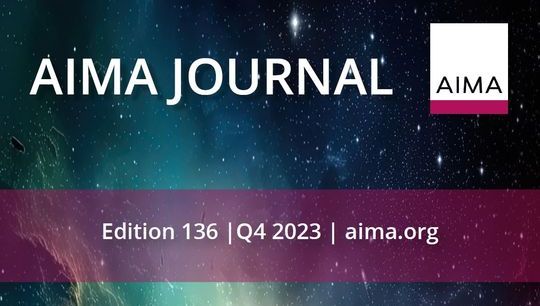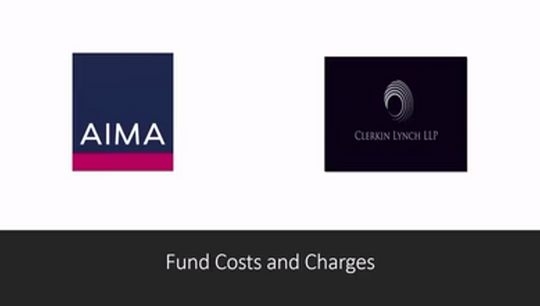Beyond the Fees: Key Considerations
By Wendy Beer, Director, Head of Business Consulting; William Saltus, Director, Business Consulting, and Jasmaer Sandhu, Analyst, Business Consulting, Wells Fargo
Published: 12 July 2017
Intro
The Wells Fargo Business Consulting group spoke to industry experts, investors, and managers this year, and has noticed an uptick of more complex term structures to better align the interests between managers and investors. Analysis of these recent discussions indicates that an increasing number of existing and new hedge funds are being pushed to explore such structures. The past three years of challenged hedge fund performance and muted capital flows seems to have shifted the balance of power in negotiations to investors. As a result, it appears a growing number of investors have
been pushing managers to implement tools to ensure that fees are paid based on alpha generation. In addition to reducing fees, negotiated investment terms include performance hurdles, multi-year performance crystallization periods (multi-year crystallization) and claw-backs. Even though a manager may be incented to agree to some of these terms in order to attract capital, they should be well-informed of the tax ramifications and any other implications of such terms.
Trends
Based on our discussions, hurdle rates are becoming one of the most discussed topics during term structure negotiations. The process of choosing an appropriate hurdle rate is complicated by the difficulty of separating alpha from beta. Historically, investors were content with either a fixed hurdle rate or a variable hurdle rate tied LIBOR. More recently, however, there has been a push to selecting a benchmark that more closely matches the strategy of the fund. An AIMA survey taken in early 2016 showed that a third of respondents employ hurdles within their funds – noting that, in comparison to recent years, this was a significant increase.[1] Brian Lahart, Head of Manager Research for Abbot Downing notes, “Hurdle rates tied to alpha generation would be more transformative to the industry.”[2] Investors view managers’ acceptance of hurdles tied to a benchmark as a vote of confidence by the manager in their ability to generate alpha.
In addition to considering how the benchmark matches up with the manager’s strategy, the manager should back-test to determine how the hurdle would have affected compensation in prior periods. “If a manager believes in its ability to perform, it may not negatively impact the economics of the manager,” notes Benson Cohen, a partner at Sidley Austin LLP’s Investment Funds, Advisers and Derivatives practice. As managers look to better align their incentive structures with investors’ interests, hurdles pegged to benchmarks that are aligned with the investment strategy may become more prevalent.
Less frequently employed than hurdles, multi-year crystallization and claw-backs of performance fees are another method investors are using to increase investor/ manager interest alignment. Anecdotally, looking back at our investor and manager discussions as recent as a year ago, little was spoken about multi-year crystallization. Based on dialogue with legal practitioners and the results of the AIMA survey, we infer that while multi-year crystallization adoption rates remain low, discussions including it are on the rise. Indeed, hedge fund lawyers we spoke with acknowledge an increase in conversations involving hurdles and multi-year crystallization calculations. “Given the tough performance environment, managers have been more willing to work with their investors over the last few months on implementing innovative commercial terms. Funds that employ longer-term strategies are beginning to incorporate multi-year crystallization, while an even greater number of managers are implementing benchmark-based hurdles,” notes Kelli Moll, a partner with Akin Gump Strauss Hauer & Feld LLP.
Performance crystallization periods delay the payment of incentive allocations by a time length often influenced by both the lock-up period and the investment strategy. For example, some investors may request for managers to implement a three-year performance calculation period, over which the investor would be able to “claw back” any accrued performance-related allocation during a year of under-performance. The implementation of these terms can take place through the creation of new share classes, separately managed accounts (SMAs), or funds- of-one. These can be created for both new and existing investors. During the formation phase of new hedge fund launches, investors may engage managers to consider these terms as part of either a founders share class or as part of the standard terms.
The 1 or 30 model is an example of a newer investment structure which employs hurdle rates. Developed by Albourne and popularized by a leading allocator, the model is designed to ensure that over the long run the investor will receive a greater share of alpha. In this model, the 1% management fee is an advance against the 30% incentive allocation. At the end of the year managers will receive their 30%incentive allocation, less the 1% management fee, if they beat their benchmark hurdle. If that hurdle is not reached, they only collect the 1% management fee. Making the management fee an advance against the incentive fee creates an inherent hurdle on a gross performance basis of (1%/30%), or 3.33%. This implied hurdle is on top of the benchmark hurdle that is used to ensure the 30% incentive allocation is only paid for alpha generation.[3]
Considerations
Though these terms can be effective in promoting investor alignment, there are a plethora of considerations that need to be vetted. Implementing any of these terms, whether in an SMA, funds-of-one, or new share class, can trigger Most Favored Nations (MFN) clauses. As Cohen from Sidley Austin LLP points out, once a manager commits to such an arrangement, existing investors may need to be offered access to the same terms. The manager may either be legally required to extend these terms to existing investors because of an MFN or otherwise feel compelled to extend the terms to existing investors. The potentially broad reach of a poorly drafted or insufficiently understood MFN provision can have unexpected consequences. Underscoring the importance of drafting, Cohen notes that an MFN clause agreed to in a specific feeder fund “may apply not only to new share classes of that feeder fund, but to SMAs and funds-of -0ne that pursue similar investment objectives.” Therefore, when agreeing to MFN clauses, managers should work closely with experienced counsel to draft the MFN as narrowly as possible to avoid it being applied beyond the specific circumstances that a manager would expect.
Tax implications also need to be considered. For example, a scenario that could trigger tax questions is when manager performance is benchmarked to an index, but the index is negative for the performance period being measured. In this situation there is a possibility that the manager will beat the benchmark but still have negative absolute performance. Because the incentive that is calculated is based on negative absolute performance, it may not be a profit allocation. A couple of different ways this can be approached include: classify the incentive as a guaranteed payment or delay taking the incentive until the manager generates profits. With a guaranteed payment classification, the manager may receive the revenue immediately but it could be taxed at the higher ordinary income tax rate. In the case of delaying the earning of the incentive, the revenue will be classified as an allocation of profits and potentially taxed at the lower long-term capital gain rates, but the manager will have to wait until a year with positive absolute performance to receive this allocation[4]; this approach is not without its risks. “This method creates an economic risk because the manager will forfeit the incentive if the fund shuts down before the manager is able to create positive absolute performance,” notes Joseph Heavey, Partner, of KPMG.
Likewise, there are tax considerations when implementing a multi-year performance crystallization period. From the perspective of generally accepted accounting principles (GAAP), a performance allocation needs to be made to the general partner (GP) on an annual basis, and will appear as accrued incentive to the GP on the financial statements even though it has not been earned. Furthermore, the GP may receive an allocation of taxable income and have to pay taxes on that income on an annual basis based on this accrued amount, even though the GP hasn’t earned a dollar within the structure of a multi-year performance crystallization period. If that performance accrual needs to be clawed back in a subsequent year of under-performance, it could be difficult for the GP to recover the amount of any taxes paid immediately because any losses allocated would generally be capital in nature, and capital losses can only be utilized to offset other capital gains and generally cannot be carried back. Any unutilized capital loss could be carried forward into future years, so the GP should not lose the benefit.[5]
In an era of challenging market conditions, investors are continuously pushing for a greater alignment of interests. Based on Wells Fargo’s discussions with its managers and investors which highlight the increasing adoption of hurdles, this indicates that managers are buying into this notion. As discussed, multi-year crystallization, a tool designed to align liquidity of underlying investments and investor lock-up agreements with manager performance allocations, is another tool being discussed as a way to way to better align manager’s and investor’s interests . Today’s managers are designing terms to better align their funds with their investors, while remaining vigilant regarding all possible tax implications of these structures. Investors are always willing to pay managers for alpha.
To contact the authors:
Wendy Beer, Director, Head of Business Consulting, Wells Fargo: [email protected]
William Saltus, Director, Business Consulting, Wells Fargo: [email protected]
Jasmaer Sandhu, Analyst, Business Consulting, Wells Fargo: [email protected]
Footnotes:
[1] AIMA paper “In Concert”, p. 9
[2] Abbot Downing, a Wells Fargo owned company, is a wealth management company
[3] Albourne “Case Study: The Texas Teachers’ “1 or 30 Fee Structure”, December 2016
[4] Note: Each situation may differ and you should consult your tax expert.
[5] For illustrative purposes only. Each situation may differ and you should contact your tax expert.
This document and any other materials accompanying this document (collectively, the “Materials”) are provided for general informational purposes. By accepting any Materials, the recipient thereof acknowledges and agrees to the matters set forth below in this notice.
Wells Fargo Prime Services LLC makes no representation or warranty (expresses or implied) regarding the adequacy, accuracy or completeness of any information in the Materials. Information in the Materials is preliminary and is not intended to be complete, and such information is qualified in its entirety. Any opinions or estimates contained in the Materials represent the judgment of Wells Fargo Securities at this time, and are subject to change without notice. Interested parties are advised to contact Wells Fargo Securities for more information.
The Materials are not an offer to sell, or a solicitation of an offer to buy, the securities or instruments named or described herein.
The Materials are not intended to provide, and must not be relied on for, accounting, legal, regulatory, tax, business, financial or related advice or investment recommendations. No person providing any Materials is acting as fiduciary or advisor with respect to the Materials. You must consult with your own advisors as to the legal, regulatory, tax, business, financial, investment and other aspects of the Materials.
Wells Fargo Securities is the trade name for certain capital markets and investment banking services of Wells Fargo & Company and its subsidiaries, including Wells Fargo Prime Services, LLC, member FINRA and SIPC, Wells Fargo Securities Canada, Ltd., member CIPF, and Wells Fargo Bank, National Association.
Any securities or instruments described in these Materials are not deposits or savings accounts of Wells Fargo Bank, National Association and are not insured by Federal Deposit Insurance Corporation, Canada Deposit Insurance Corporation or any other governmental agency or instrumentality.
Notwithstanding anything to the contrary contained in the Materials, all persons may disclose to any and all persons, without limitations of any kind, the U.S. or Canadian federal, state, provincial or local tax treatment or tax structure of any transaction, any fact that may be relevant to understanding the U.S. or Canadian federal, state, provincial or local tax treatment or tax structure of any transaction, and all materials of any kind (including opinions or other tax analyses) relating to such U.S. or Canadian federal, state, provincial or local tax treatment or tax structure, other than the name of the parties or any other person named herein, or information that would permit identification of the parties or such other persons, and any pricing terms or nonpublic business or financial information that is unrelated to the U.S. or Canadian federal, state, provincial or local tax treatment or tax structure of the transaction to the taxpayer and is not relevant to understanding the U.S. or Canadian federal, state, provincial or local tax treatment or tax structure of the transaction to the taxpayer.
US IRS Circular 230 Disclosure:
To ensure compliance with requirements imposed by the IRS, we inform you that any tax advice contained in the Materials is not intended or written to be used, and cannot be used, for the purpose of (i) avoiding tax penalties or (ii) promoting, marketing or recommending to another party any transaction or matter addressed herein.
©2017 Wells Fargo. All Rights Reserved.









